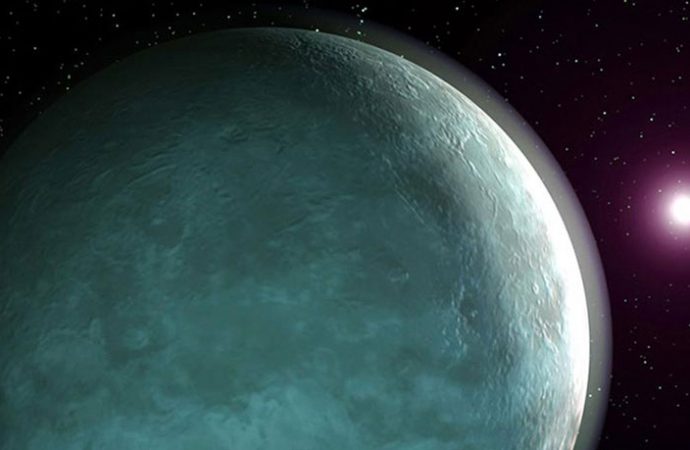Convincing evidence for such collisions outside the solar system is rare
Cataclysmic collisions between space rocks have helped explain some of the solar system’s biggest mysteries, from how the moon formed to how Uranus got its lopsided rotation. But convincing evidence for such events happening outside of the solar system is scant.
Now scientists think that they have found the first known example of a near head-on collision between two massive worlds in another planetary system, roughly 2,000 light-years away from Earth.
The chance discovery came while researchers were observing Kepler 107, a sunlike star with four orbiting planets first described in 2014, to determine each planet’s mass. Surprisingly, the star’s two innermost planets, each roughly 1.5 times the size of Earth, have dramatically different masses, the team reports February 4 in Nature Astronomy. Analysis of each planet’s mass and size revealed that Kepler 107c is roughly twice as dense as Kepler 107b. That finding suggests that Kepler 107c has a large iron-rich core, similar to the solar system’s innermost planet, Mercury, the scientists say.
Theory suggests that planets typically form from the accumulation of gas and dust swirling around a young star. Denser, rocky planets should form closer to the star because heavier elements like iron don’t dissipate as easily as lighter elements like hydrogen and helium. Kepler 107c, however, doesn’t quite fit that scenario. “It’s farther from its star [than Kepler 107b], but it’s more massive,” says Eric Lopez, an astrophysicist at NASA’s Goddard Space Flight Center in Greenbelt, Md. “It’s kind of weird.”
Lopez and his colleagues considered several possible explanations, including Kepler 107c forming closer to its star and then migrating away. But only one explanation resulted in Kepler 107c being more massive than the closer-in Kepler 107b: a giant collision between two worlds, each about 10 times Earth’s mass.
“We expect impacts to happen, but we don’t really have any idea how common they might be outside the solar system,” Lopez says.
Computer simulations of the collision of two large rocky worlds, each with an iron core composing 30 percent of their mass, produced a single planet whose mass is nearly 70 percent iron, possibly similar to Kepler 107c. Most of the remaining material vaporized during the collision, the simulations suggest.
“From a planet formation scenario, this is really interesting because it shows that in these [kinds of planetary] systems, impacts make a difference,” says Cayman Unterborn, an exogeologist at Arizona State University in Tempe.
But Unterborn still questions whether the study presents an unambiguous example of an exoplanet formed by a collision, especially because the study extrapolates Kepler 107c’s mantle and core structures from its density.
“Having the density of a planet, you can tell if it’s rocky-ish or watery-ish or gassy-ish,” Unterborn says. “But actually getting how big the mantle is versus the core is kind of tough,” because there are many ways a planet could be structured and still have the same density, he says. But Unterborn says he’s hopeful the study “spurs some healthy debate about the origins of planets that are kind of weird.”
Source: Science News

































Leave a Comment
You must be logged in to post a comment.